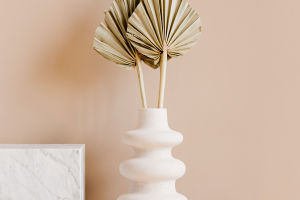Flowers are beautiful gifts from nature, and their colors and textures bring us endless surprises and joys.
When selecting and arranging flowers, the correct color combinations can create unique and beautiful effects.
This article will introduce common types of flowers and their colors, as well as how to use the art of color matching in floral arrangements to create visually pleasing floral landscapes.
Common Flowers
1. Roses:
Roses are one of the most common and well-known flowers.
They come in various colors, each with its own symbolism: red for passion and romance, yellow for friendship, white for purity, and purple for mystery.
2. Tulips:
Tulips are elegant and noble flowers.
They usually appear in solid or bicolor forms, including red, yellow, pink, purple, etc.
Tulip color combinations can be chosen according to the occasion and personal preferences, creating either a classic or modern atmosphere.
3. Carnations:
Carnations are flowers full of vigor and vitality.
They come in various colors such as red, pink, white, and yellow.
With their distinctive ruffled petals, carnations can stand alone or be mixed with other flowers to foster a cheerful and pleasant atmosphere.
4. Lilies:
Lilies are elegant and pure flowers.
They come in a variety of colors, including white, pink, yellow, orange, and purple.
Lilies are often used for celebrations and blessings. They can be used alone or mixed with other flowers to create a noble and peaceful atmosphere.
Art of Color Matching
1. Monochromatic Matching:
Monochromatic matching is a simple and classic way of color matching.
Choosing different shades or tones of the same flower color can create a unified and harmonious effect.
For example, selecting roses of different shades of red, from light pink to deep red, creates a warm and vibrant atmosphere.
2. Contrast Matching:
Contrast matching creates strong visual contrasts by placing flowers of different colors together.
Choosing complementary or contrasting colors for pairing, such as combining yellow tulips with purple hyacinths, creates a striking contrast and increases visual impact.
3. Analogous Matching:
Analogous matching combines adjacent colors to create a soft and harmonious effect.
Choosing adjacent colors, such as pairing pink carnations with purple dianthus, creates a soft and romantic atmosphere.
4. Triadic Matching:
Triadic matching involves choosing three different colors of flowers to form a triangular color combination.
For example, placing red roses, yellow sunflowers, and blue delphiniums together creates a lively and contrasting effect.
Practical Application
1. Flower Bouquets:
When making flower bouquets, you can choose suitable flowers and color schemes according to the occasion and personal preferences.
For instance, a romantic bouquet composed of red roses, pink carnations, and white lilies is perfect for gifting to a loved one.
2. Indoor Decor:
Using flowers as part of indoor decor can add vitality and color to the space.
Choose flowers that suit the indoor environment and coordinate with the overall decor style.
For example, in a modern-style interior, you can choose monochromatic or contrasting flowers to highlight the overall modern feel.
3. Celebrations and Events:
Flowers play an important role in celebrations and events.
Choose flowers and color schemes that suit the theme and atmosphere of the event.
For example, for weddings, you can choose white and pastel-colored flowers to complement the overall romantic and elegant style.
The beauty and diversity of flowers bring endless joy and beauty to our lives. Through proper selection and arrangement, we can create various unique and beautiful floral landscapes, whether it's making flower bouquets, indoor decor, or celebratory events, showcasing the charm of flowers and the wonders of color-matching art. May each bouquet convey the emotions and meanings you wish to express, adding more color and warmth to life.


